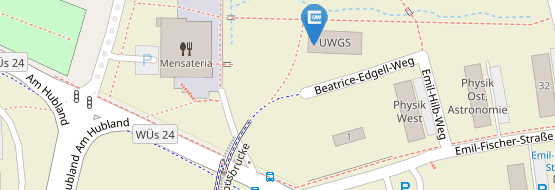The University
History meets Future
The University of Würzburg is in the unique situation that it can celebrate twice as many anniversaries than most other universities. The simple reason for that: It was founded twice. The first foundation of 1402 did not last for very long, mostly due to financial problems.
In 1582 however, Prince Bishop Julius Echter von Mespelbrunn founded the university again, endowing it with sufficient property and funds. He commissioned a new building, now called the „Old University“, housing the four founding faculties of Theology, Philosophy, Medicine and Law, the latter one up to today.
In 1802 Würzburg became a part of Bavaria and the university was transformed into a secular state university. During the 19th century and the early 20th century the University of Würzburg expanded steadily, not least due to the international repute of eminent scholars among its faculty, such as the philosophers Schelling and Brentano and the physicians Virchow and von Koelliker. This time saw a rearrangement and segregation of faculties. The Humanities moved to the „New University“ at the end of the 19th century. At the then northern perimeter of the city new institutes for the natural sciences and medical research were installed, home to several Nobel laureates rubbing shoulders in their new location.
All important additions to the university were the new university hospitals, constructed during the 1920s in the north-east of the city in Grombühl and the campus "Am Hubland“, located on a hill towering Würzburg. The medical campus is currently undergoing a complete modernization, adding many new research institutions. “Am Hubland” is also steadily receiving new teaching and research infrastructure since its inauguration in 1969. It is the location of the natural science institutes, such as the reputed Biocenter, and major parts of the humanities.
Most recently, an area the same size as the current Hubland Campus and directly adjacent has been opened up for further expansion, getting populated quickly by new research institutes, but also support infrastructure such as child care facilities.
Since the 1980s Würzburg has seen an enormous rise in research activity, catalyzing and being catalyzed by an exponential increase in competitive extramural funding. Nowadays, still being a medium sized German university with its 29.000 students, Würzburg belongs to the most active and successful German universities in raising research grants (DFG funding atlas ). And the story is likely to continue, not least thanks to heavy investments in infrastrucutre of several hundred million Euro over the next years.


